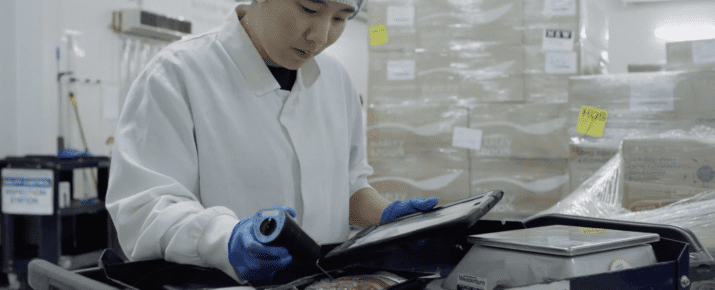8 Ways To Take Your Checklist From Good To Great
Checklist Best Practices | By | 24 May 2016 | 3 minute read

“Checklists not only offer the possibility of verification but also instill a kind of discipline of higher performance.” – Atul Gawande, MD, “The Checklist Manifesto”
Checklists seem simple, Gawande says, author of the best-selling book, Checklist Manifesto. They are sometimes hard for us to accept when people are in complex jobs that rely on experience and skill. Just ticking boxes on a checklist is not the ultimate goal, the goal is to embrace a culture of teamwork and discipline. No matter how expert you may be, well-designed checklists can improve outcomes. Learn more about how the humble checklist can cause a cultural shift in your workplace.
We can teach you how to optimize your checklist with eight simple tips.
1. Identify mistakes that cause failure
Understanding what causes failure in your workplace is the most beneficial step towards creating a checklist that works. Addressing these mistakes can form the focus of your checklist. As a surgeon, small mistakes can drastically change a patient’s outcome. Tasks like confirming that the patient has no allergies to any of the medications that are frequently used in surgery may seem simple, but can get overlooked in a busy hospital. Even in life-and-death situations, the checklist can organize your most crucial tasks.
2. Determine whether your checklist is a “Do-Confirm” or “Read-Do”
With a Do-Confirm checklist, team members perform their job from memory and experience. They then stop and confirm that the checklist has been followed correctly. A Read-Do checklist allows workers to carry out tasks and check them off as they complete them. In this below checklist, a worker is performing a crane inspection using the Read-Do format. They are assessing the condition and safety or the hoist. In this instance, the worker would read the question, inspect the hoist and mark it as Safe or At Risk.
Having a clear vision on whether the checklist is a Do-Confirm or Read-Do checklist will inform how you intend to build the checklist and the expected behavior of the auditor. A Do-Confirm checklist may be used to ensure last minute details have been accounted for, while a Read-Do checklist is much like a recipe. You work through the checklist and tick items off as they are completed.
3. Use images to convey messages
It’s a lot easier to convey a message using visual props. Display a tutorial diagram for best practices or to teach checklist users how to set up a piece of equipment. In multilingual workplaces, which is increasingly common due to our globalized workforce, images can work very effectively to break through language barriers.
4. Use clear and concise language, free of jargon
Workers don’t have time to look up acronyms of industry jargon. Write your checklist questions as straight-forward and with as little text as you can. Familiar language of the profession should be used with the wording simple and exact.
5. Follow a predictable order
Put your checklist in a logical format that follows your natural workflow. You wouldn’t put “wash hands” after you instruct a worker to prepare food in the kitchen. Take note of your current workflow and write down the logical steps. Likewise, break up your tasks into categories. For instance, if tasks are to be conducted in the kitchen, put all the tasks that relate to this area within the one category.
6. Don’t spell out everything
Checklists that are too long are hard to use and impractical. Awareness of the situations they will be used in is crucial.. As Atul Gawande says in Checklist Manifesto, “ [checklists] provide reminders of only the most critical and important steps – the ones that even the highly skilled professionals using them could miss.” Checklists are designed to make priorities clearer and prompt people to function better as a team. The best checklists have five to nine items, which is the limit of the working memory, but this does depend on context. For instance when the DOOR FWD CARGO warning light goes on in a cockpit, a pilot’s first instinct would be to troubleshoot instead of grabbing the checklist book. Pilots nonetheless turn to their checklists for two reasons. Firstly, they are trained to do so, and secondly, they have proven time and time again that they work. They trust the process and even turn to the checklist in high-stress situations. .
7. Test it in real life situations
Following the above steps, you’ve made your checklist and now it’s time to put it in action. Your first checklist will inevitably have gaps. Aviation experts test their checklists in a number of scenarios before they allow pilots to adopt it. Take note of the gaps and go back to the drawing board to fix the errors.
8. Make your checklist digital
Digitizing your checklists allows you to effortlessly control your safety and quality assurance. Having to test your checklists in real-life is much simpler to do in digital format. Paper checklists can be cumbersome and you are bound to miss crucial insights. Digital checklists allow you to test it, collect feedback and tweak it as necessary. A digital trail allows you to collect your checklist data in real-time and push out updates frequently as you continue to refine your checklists.
Important Notice
The information contained in this article is general in nature and you should consider whether the information is appropriate to your specific needs. Legal and other matters referred to in this article are based on our interpretation of laws existing at the time and should not be relied on in place of professional advice. We are not responsible for the content of any site owned by a third party that may be linked to this article. SafetyCulture disclaims all liability (except for any liability which by law cannot be excluded) for any error, inaccuracy, or omission from the information contained in this article, any site linked to this article, and any loss or damage suffered by any person directly or indirectly through relying on this information.





